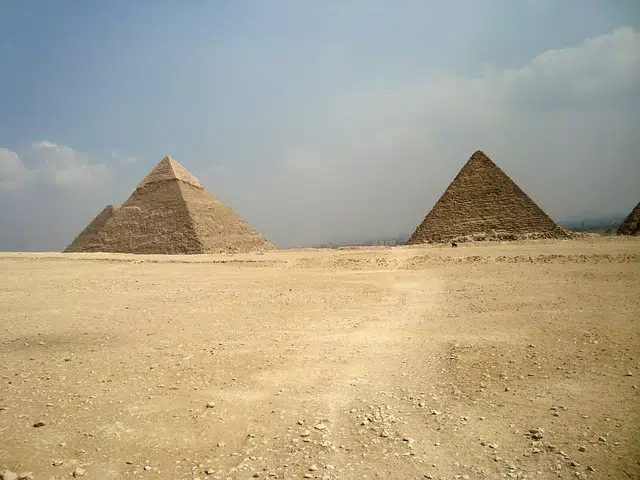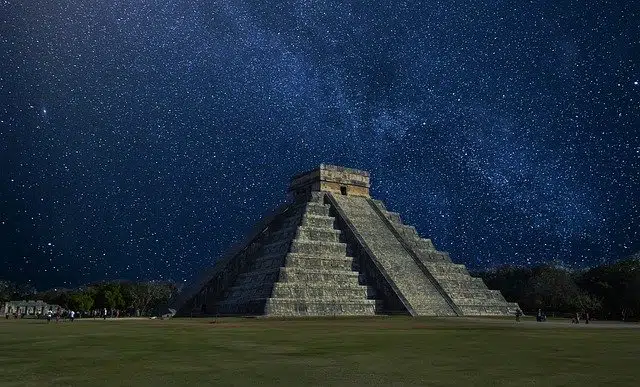
A pyramid is a structure with a square as a base and sides like triangles that meet at the top vertex.
Pyramid is a term that was born in Ancient Greece and that came to Latin as pyramis . It is said that the word was used to name a food made from flour, which had a pyramidal appearance.
Within the field of geometry , a body that has triangles as faces is known as a pyramid . These triangles meet at a common point called the vertex .
Pyramids in architecture
The most frequent use of the notion is found in architecture , since a pyramid is named after a construction that has a shape with the aforementioned characteristics of the geometric polygon. Pyramids used to be built in ancient times as a monument , to pay different tributes and tributes.
A pyramid, therefore, is a construction that usually has a square as a base, whose four sides rise like triangles and coincide at a vertex located at the upper end.
The pyramids could house the remains of leaders or be created to worship a god . In Egypt you can still see some of the most important pyramids of Antiquity. Among them, the pyramid of Giza stands out, which is the only one of the Seven Wonders of the World that still exists. It is believed that the construction of this pyramid was completed in the year 2570 BC . Other very important ancient pyramids were built by the Mayans and are found in Mexico and Central America .

Different ancient civilizations built pyramids that still exist.
Historical examples
Temple of Kukulkan, Mexico
This pyramid is also known as El Castillo , a name that the Spanish conquerors gave it because they were not used to a structure of its characteristics, and it is located on the Yucatan Peninsula. Its construction dates back to the 12th century AD. C. and was in charge of the Itza Mayans. Regarding its design, it has nine plinths, four main facades (all with their own staircase in the center) and an upper platform on which there is a small structure similar to a temple called a temple .
Giza Pyramids, Egypt
As mentioned in a previous paragraph, it is the only seventh wonder of the ancient world that still stands. The Great Pyramid of Cheops was built in 2570 BC. C. with more than 2 million blocks and has an approximate height of 139 meters. Today it is possible to go through its tunnels and galleries, visit the royal chamber and admire the sphinx of Gizeh, as well as the pyramids of Khafre and Mycerinus, for a magical experience like no other.
Pyramid of the Sun, Mexico
Another example of the many treasures that Mexican soil has for lovers of history and architecture. The Pyramid of the Sun is located a short distance from Mexico City and its 75 meters high rise between the Pyramid of the Moon and the Citadel. The views from its summit are certainly majestic and intensify the mysticism that is already breathed in the presence of such stone colossi.
Tikal Pyramids, Guatemala
In the north of Guatemala, in the jungle, there is a treasure called Tikal, one of the most fascinating archaeological sites in the Mayan world. Of the set of pyramids that can be visited in this UNESCO Heritage Site, the Jaguar Temple stands out, which is 72 meters high and has truly incomparable architectural beauty. It is worth mentioning that there has been extensive restoration work since its discovery in recent decades.
Symbolic use of the notion of pyramid
As a symbolic figure, the idea of a pyramid can be used to graph the structure of a society or an organization where there are few who occupy the upper part (the vertex) and many who are at the lower part (the base).
In this framework, we often speak of a social pyramid . This concept seeks to reflect that, in a community, a small number of inhabitants are located in the highest area, unlike what happens with the large number of people who are distributed in the lower sector.
